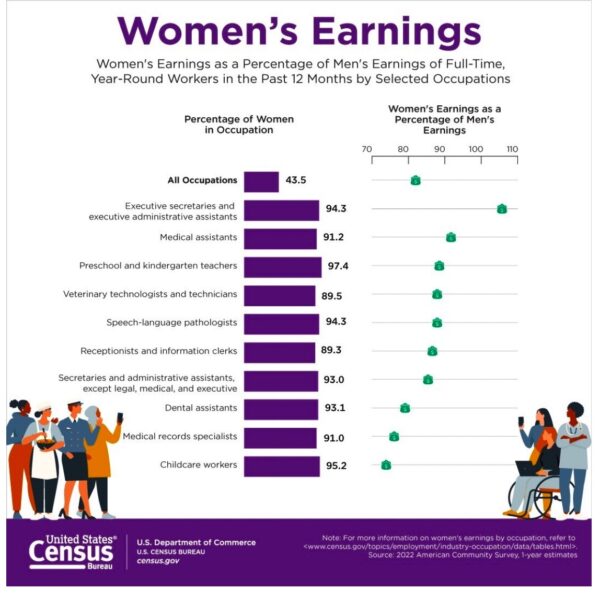Women’s History Month: March 2024
March 28, 2024

National Women’s History Month honors the successes and sacrifices of U.S. women. It dates to March 8, 1857, when hundreds of women from New York City garment and textile factories rallied to protest harsh working conditions. In 1909, New York City became the site of the nation’s first Women’s Day celebration, a year after 15,000 women there marched to demand shorter working hours, better pay, an end to child labor and the right to vote. More than seven decades later in 1981, Congress set aside the second week of March as National Women’s History Week. Six years later, Congress expanded the week to a month. As we celebrate Women’s History Month, we reflect upon the advances women have made, including increased earnings, educational attainment and job opportunities.

The following facts are possible thanks to the invaluable responses to U.S. Census Bureau surveys. We appreciate the public’s cooperation as we measure America’s people, places and economy.
Did You Know?
The number of females in the United States as of July 1, 2022. There were about 165 million males in the United States as of the same date.
Source: Vintage 2022 Population Estimates
There were about 1.9 million more females age 85 and older (4.2 million) than males (2.3 million) in the United States as of July 1, 2022.
Source: Vintage 2022 Population Estimates
In 2022, the percentage of women age 25 and older who had earned bachelor’s degrees or higher compared with 34.5% of men.
Source: 2022 American Community Survey, 1-year estimates
The number of females age 16 and older who participated in the civilian labor force in 2022. This comprises 58.6% of females age 16 and older.
Source: 2022 American Community Survey 1-year estimates
The percentage of full-time, year-round female workers over age 16 median earnings compared to men’s earnings in 2022.






























